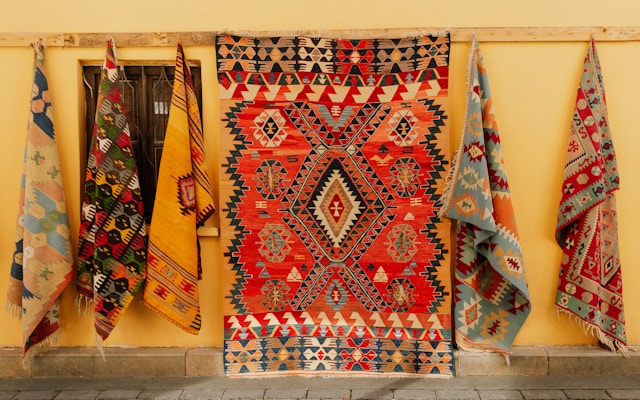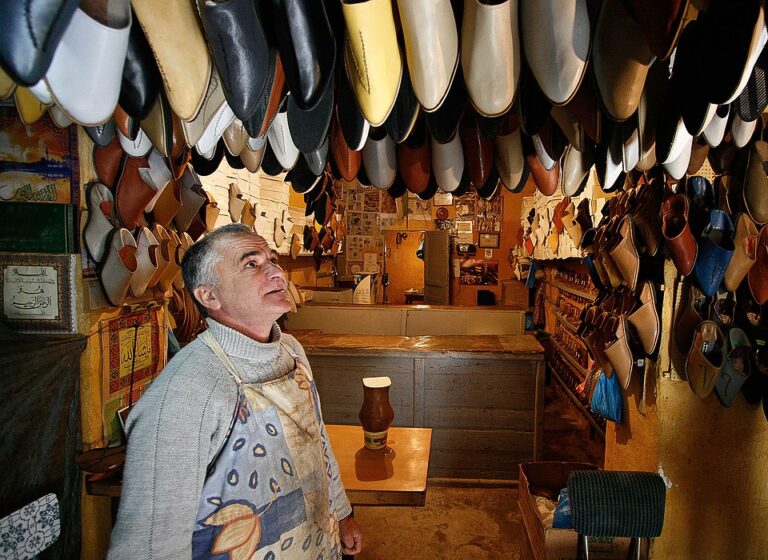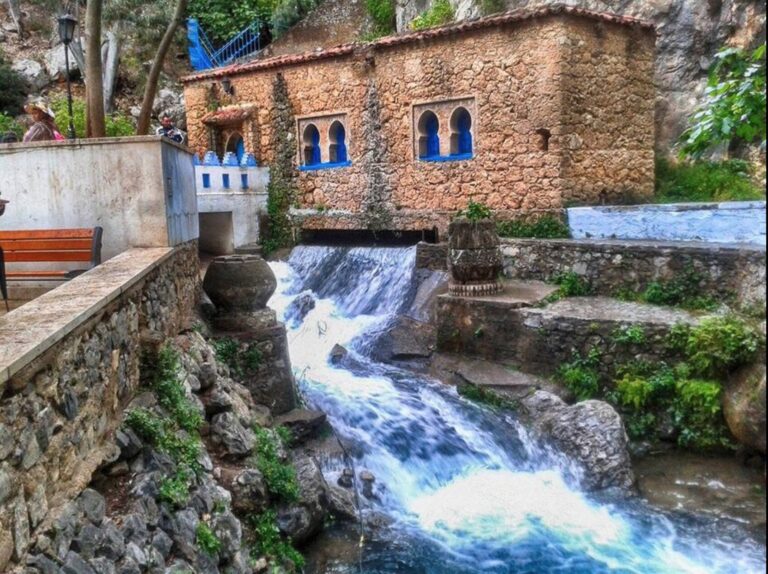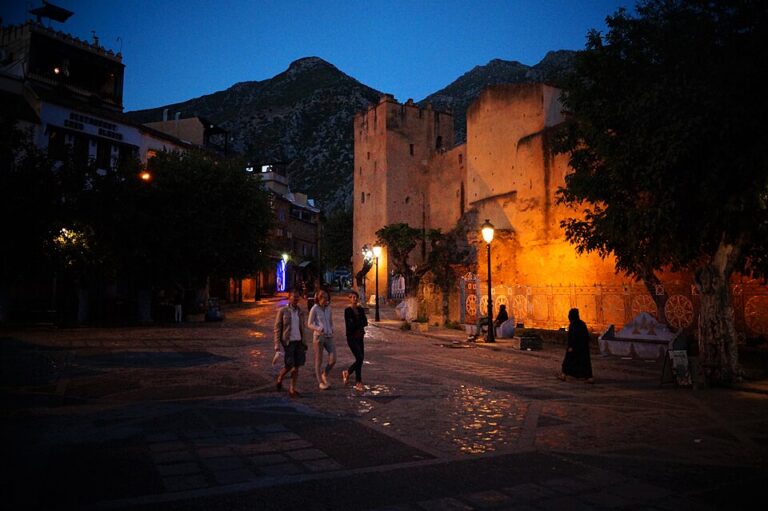
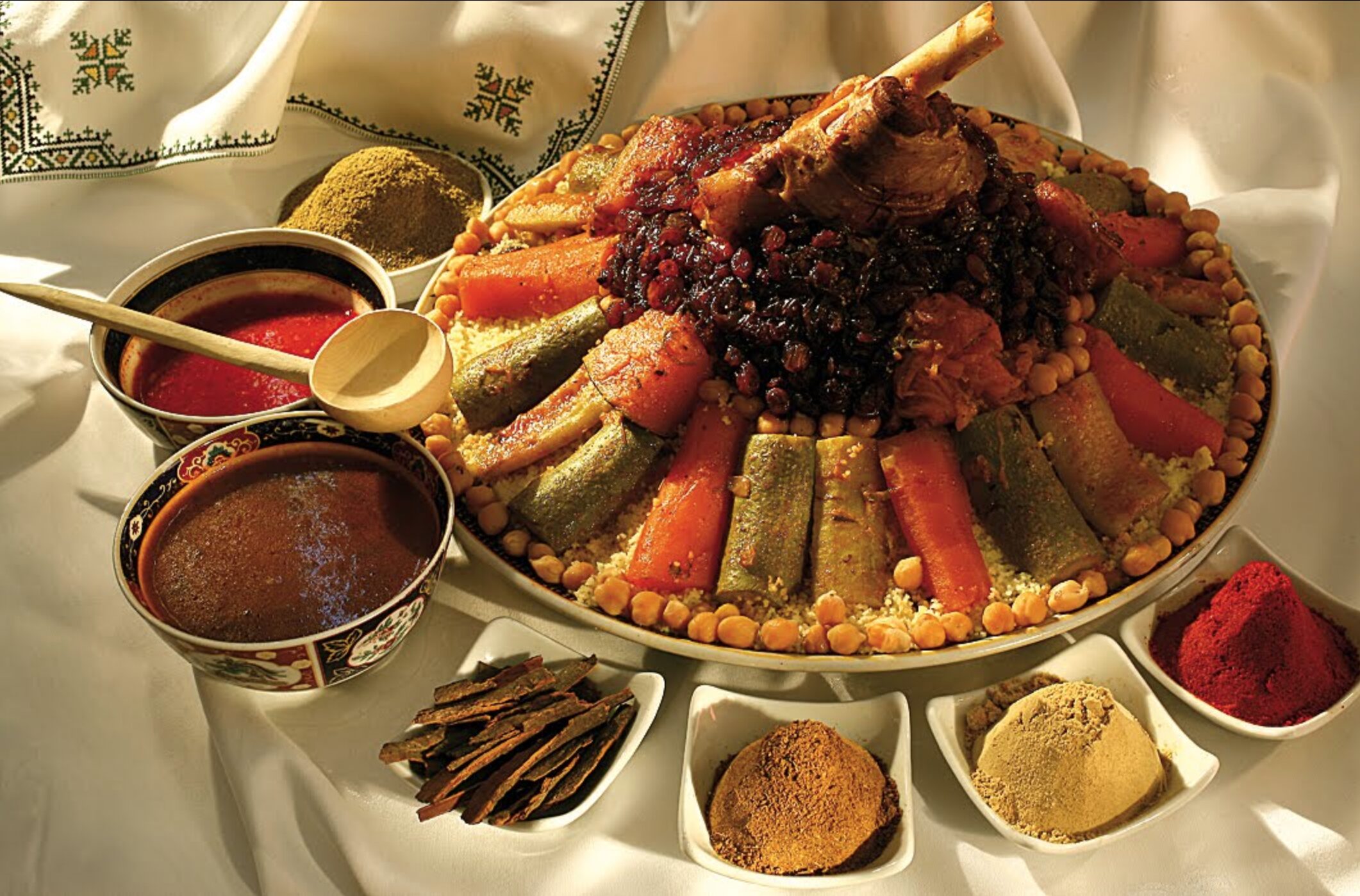
If there’s one dish that embodies the spirit of Moroccan culture, it’s couscous. Found in homes, markets, and restaurants across the country, couscous in Morocco is more than just food—it’s a weekly ritual, a symbol of hospitality, and a link between generations.
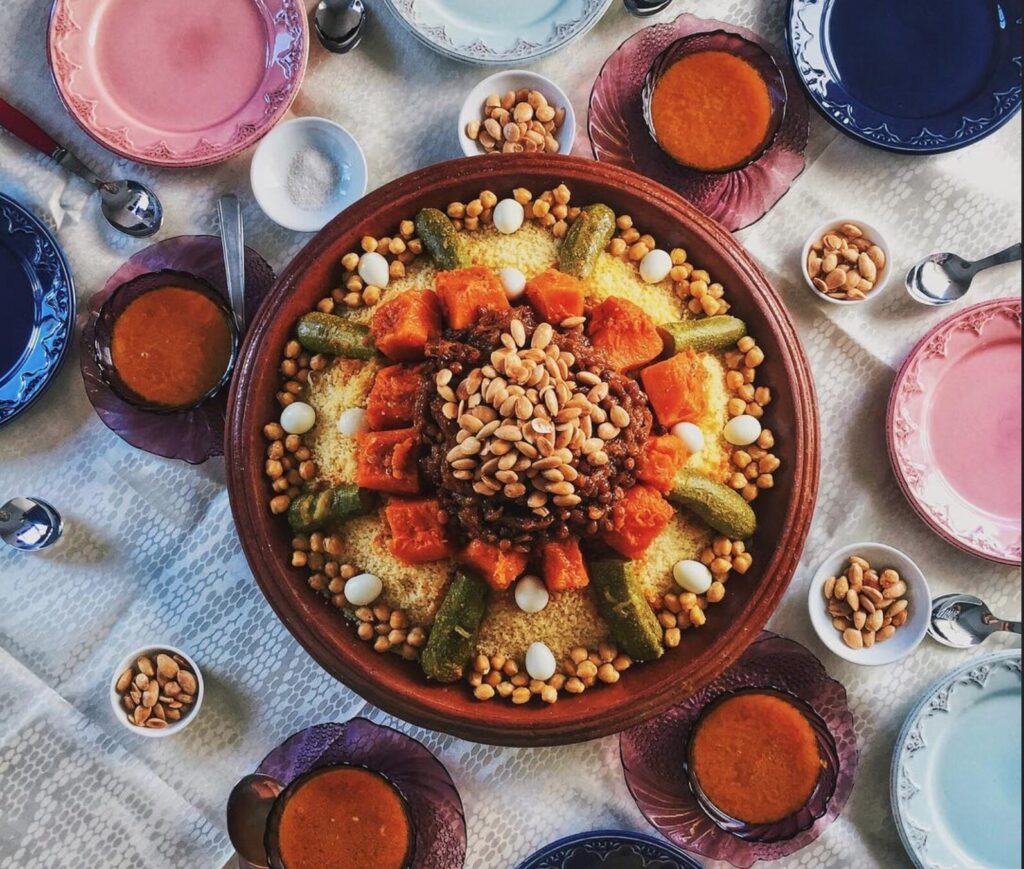
In this blog post, we dive into the origins, traditions, and variations of Moroccan couscous. Whether you’re planning your first trip or returning for more culinary adventures, prepare to fall in love with this iconic dish all over again.
The Story of Couscous in Morocco
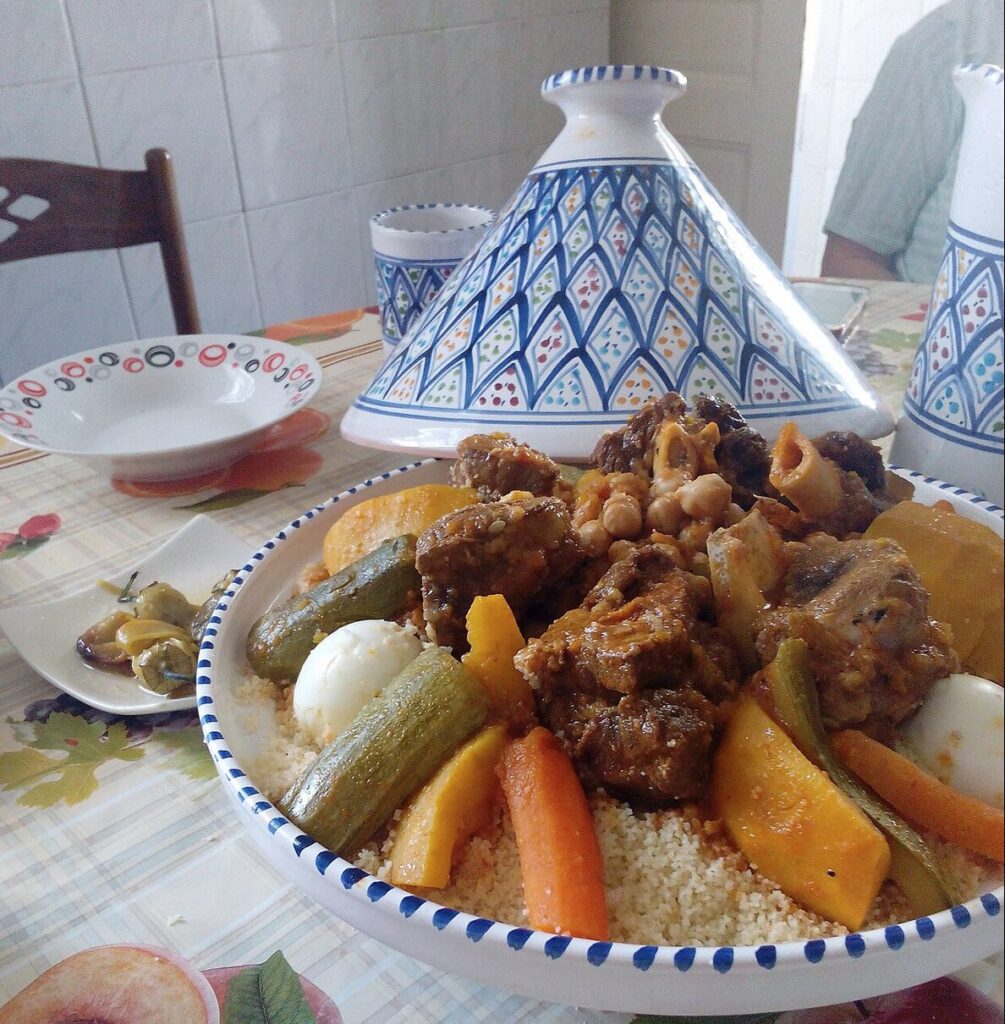
Couscous is a staple of North African cuisine, made from steamed semolina wheat. In Morocco, it’s typically served on Fridays, following the Jumu’ah (weekly communal prayer), as part of a large family meal. The dish is deeply tied to community, spirituality, and celebration.
Unlike the instant couscous found in Western supermarkets, traditional Moroccan couscous is hand-rolled and steamed slowly three times in a couscoussier, a two-part steamer. This results in a light, fluffy texture that soaks up flavorful broths and spices.
Each family has its own way of preparing couscous, often passed down through generations. The most common version includes seven vegetables (carrots, zucchini, pumpkin, turnips, cabbage, onions, and chickpeas), along with lamb or chicken, all flavored with ras el hanout, a Moroccan spice blend.
Regional Couscous Variations in Morocco
Couscous in Morocco changes with the landscape—from the Mediterranean coast to the Saharan dunes.
Couscous Tfaya (Sweet Couscous)
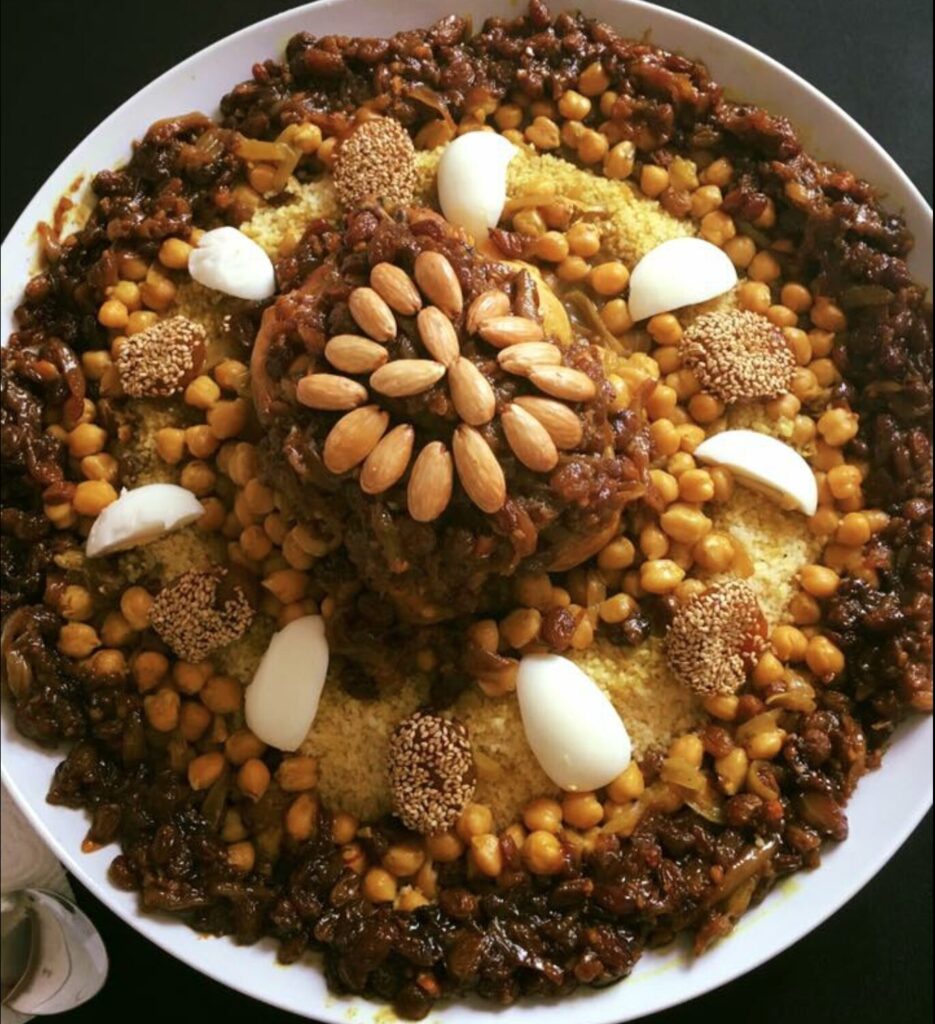
Popular in Rabat and Meknes, this version features caramelized onions, raisins, cinnamon, and toasted almonds on top of the savory base. It’s often reserved for celebrations and holidays.
Fish Couscous
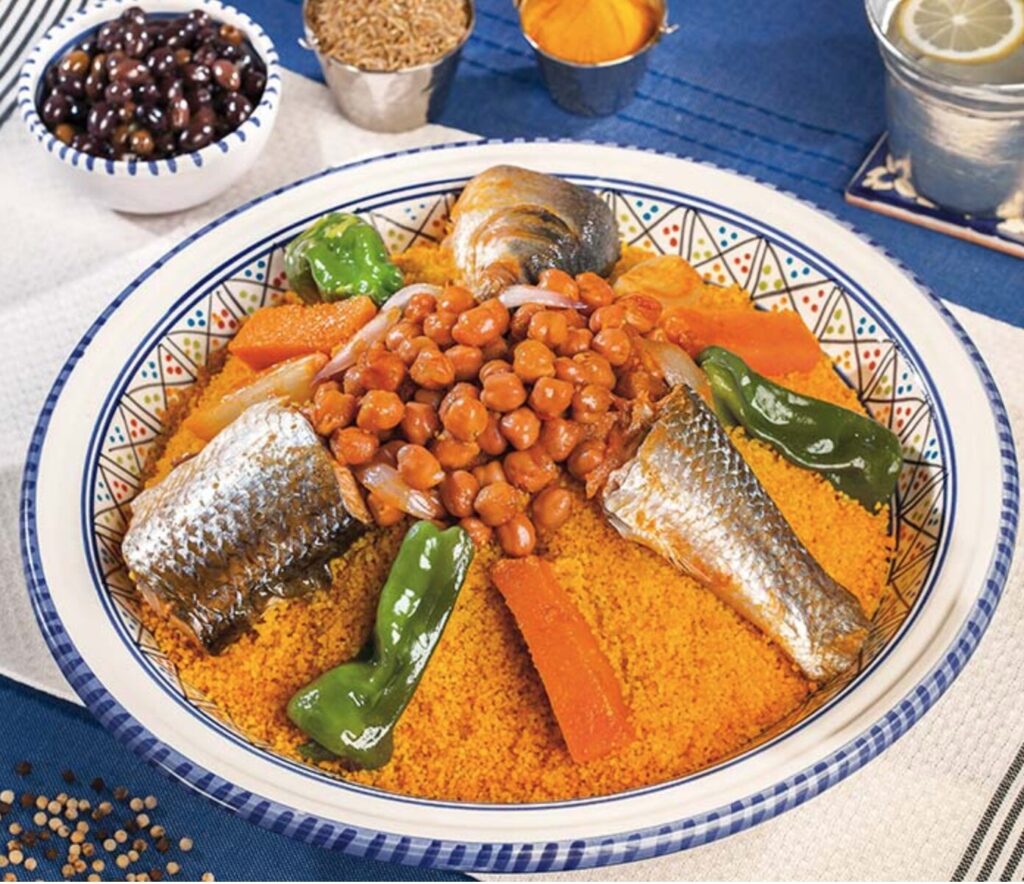
In Agadir or Essaouira, coastal cities with rich fishing traditions, couscous is served with grilled or steamed fish, often accompanied by chermoula, a herby marinade with garlic, paprika, and lemon.
Vegetables Couscous
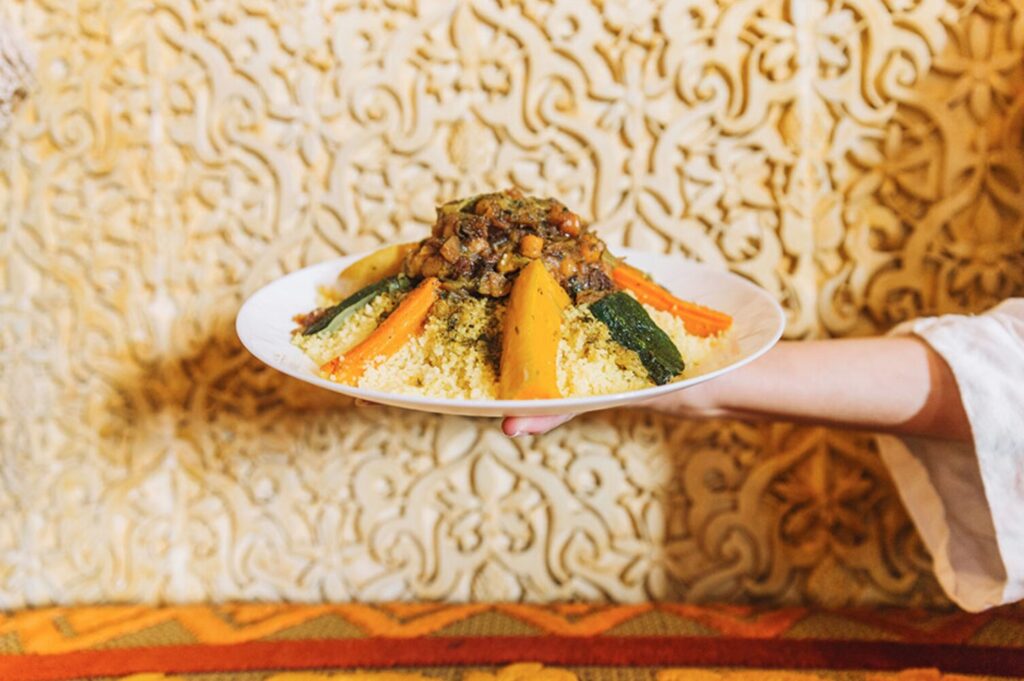
Common in cities like Chefchaouen, vegetarian couscous is loaded with seasonal vegetables and can be made vegan-friendly using olive oil and vegetable broth.
Sahara Couscous
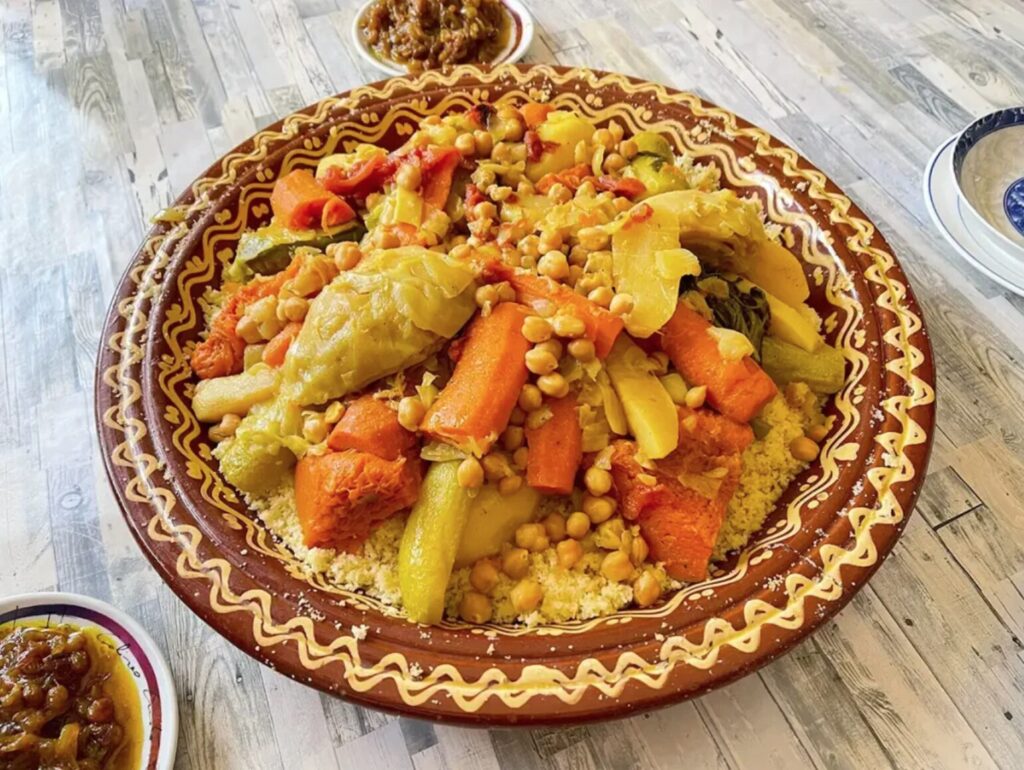
In southern Morocco and the Sahara region, couscous might include camel meat, dried fruits, and local spices—reflecting desert survival traditions and flavor preferences.
Couscous Etiquette and Culture
Couscous in Morocco is usually served in a large communal dish, with family or guests sitting around it. Each person eats from their own “section” using a spoon—or traditionally, the right hand.
It’s a dish of togetherness. When served to guests, it symbolizes generosity and respect. You’ll often hear “Bismillah” before eating and “Saha” (bon appétit) as a kind gesture afterward.
Some key etiquette tips:
- Don’t reach across the dish—stick to your side.
- Compliment the host; preparing couscous is labor-intensive and filled with pride.
- On Fridays, it’s common to be invited by locals—even strangers—to join in a couscous meal after mosque.
How to Learn Couscous-Making in Morocco
The best way to understand Moroccan couscous is to make it yourself—or at least watch someone do it the traditional way.
Cooking Classes
Many Moroccan cities offer cooking classes that teach couscous preparation:
- Marrakech: Take a class at the Amal Women’s Center or in a riad with a home cook.
- Fes: Classes often start with a guided visit to the souk to shop for fresh vegetables and spices.
Home Visits
You can also book culinary experiences through platforms like Airbnb Experiences or EatWith, where Moroccan families invite you into their homes for a real Friday couscous.
These experiences go beyond food—they’re a way to connect with Moroccan people and culture in the most genuine way.
UNESCO Recognition
In 2020, couscous was officially added to UNESCO’s Intangible Cultural Heritage list, recognizing its importance across North Africa. Morocco, Algeria, Tunisia, and Mauritania jointly submitted the nomination—a rare display of unity.
This status confirms what Moroccans have known for centuries: couscous is not just a dish, but a cultural treasure.
When’s the Best Time to Enjoy Couscous in Morocco?
Every Friday is a good day for couscous. But certain seasons bring out its best:
- Spring (March–May): Fresh vegetables are in abundance, and the weather is perfect for enjoying an outdoor couscous lunch in the countryside or on a riad terrace.
- Fall (September–November): Root vegetables like pumpkin and turnip, key couscous ingredients, are in season.
- Ramadan and Eid: Special couscous recipes, often with sweet additions or rare meats, are prepared for festive meals.
FAQ – Couscous in Morocco
What is couscous made of in Morocco?
Moroccan couscous is made from semolina wheat, steamed multiple times and topped with vegetables, meat, and spiced broth.
Why is couscous eaten on Fridays?
It’s a tradition tied to Jumu’ah, the Islamic Friday prayer. Families gather afterward to share couscous, symbolizing unity and blessings.
Can I find vegetarian couscous in Morocco?
Absolutely. Many restaurants and home cooks offer vegetarian versions loaded with seasonal produce and olive oil.
Is couscous spicy in Morocco?
Not usually. Moroccan couscous is aromatic, not spicy-hot. It uses warming spices like cinnamon, cumin, ginger, and saffron.
Can I buy traditional Moroccan couscous to take home?
Yes! You can buy dried hand-rolled couscous and spice blends in Moroccan souks. Just make sure to ask vendors for authentic, artisanal products.
Final Thoughts: Couscous as a Journey
To taste couscous in Morocco is to taste its history, family life, and enduring traditions. It’s comfort food, cultural expression, and community all rolled into one. From the first bite, you’ll understand why Moroccans treasure this dish so deeply.
So, when planning your Moroccan journey, don’t just look for couscous on the menu. Seek it out where it truly lives: in the heart of a home, in the quiet after Friday prayer, or steaming gently in a sunlit village kitchen.


